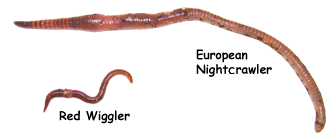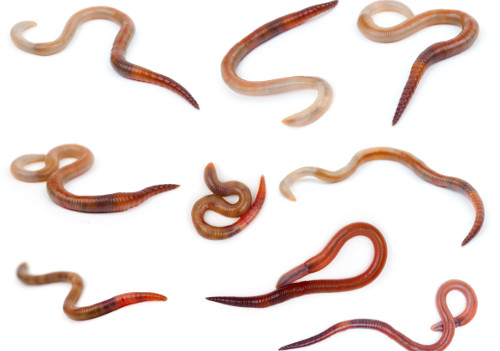Red Wiggler Worms Demystified: Unlocking the Keys of Vermiculture for Greener Living and Nutrient-Rich Dirt
In the realm of sustainable practices for enriching dirt quality and promoting eco-conscious living, red wiggler worms play a crucial yet frequently overlooked role. These simple animals possess the remarkable capability to change organic waste right into nutrient-rich spreadings that function as a powerful all-natural plant food. By delving into the globe of vermiculture, one can reveal a wide variety of benefits that prolong far past standard composting techniques. Comprehending the complexities of taking care of these worms, maximizing their setting, and using their spreadings can result in a greener way of living and much healthier soil for plants to grow.
The Duty of Red Wiggler Worms
Red Wiggler worms play a vital role in composting systems by effectively damaging down raw material into nutrient-rich spreadings. These starved eaters eat a selection of natural materials, such as cooking area scraps, yard waste, and paper items. As they feed, the worms' digestive processes damage down the natural matter right into a fine, dark, and nutrient-dense material understood as worm spreadings or vermicompost.
The castings produced by Red Wiggler worms are highly helpful for soil wellness and plant development. They are rich in crucial nutrients like potassium, nitrogen, and phosphorus, which are crucial for sustaining healthy and balanced plant growth. Furthermore, worm castings contain advantageous microorganisms and enzymes that assist boost dirt structure, increase water retention, and boost nutrient uptake by plants.
Advantages of Vermicomposting

It enhances soil structure, enhances soil oygenation, and boosts soil wetness retention. Vermicompost also improves the dirt with vital nutrients like nitrogen, potassium, and phosphorus, promoting plant development and overall soil fertility.
Furthermore, vermicomposting assistances lasting gardening practices by supplying a natural and chemical-free option to artificial fertilizers. Red Wiggler Worms. This eco-friendly approach not only enhances the soil but also aids decrease reliance on unsafe chemicals, promoting a greener and more sustainable way of gardening
Establishing a Worm Bin
When developing a worm container for vermicomposting, appropriate configuration is essential to make sure the success of the composting process. The very first step in setting up a worm bin is picking a suitable container. This can be a plastic bin or wood box that provides adequate area for the worms to move about and has correct water drainage openings to avoid waterlogging. Next, a bedding material such as shredded newspaper, cardboard, or coconut coir need to be contributed to the bin. This bed linens supplies a comfy atmosphere for the worms and assists maintain dampness levels.
After adding the bed linen, present the red wiggler worms to the container. The worms need to after that be supplied with food scraps such as fruit and veggie peels, coffee premises, and eggshells.
Routinely keep an eye on the dampness degrees and temperature level in the worm Red Wiggler Worms container to make certain optimum conditions for the worms. With correct arrangement and upkeep, the worm bin will effectively convert organic waste into nutrient-rich garden compost for your plants and garden.
Harvesting Worm Spreadings
To efficiently accumulate nutrient-rich worm spreadings from your vermicomposting system, a methodical harvesting technique is crucial. When it comes time to harvest the worm castings, there are a few key actions to follow to make certain an effective procedure. To start with, stop adding fresh food scraps to one side of the worm bin for a number of weeks before harvesting. This urges the worms to migrate sideways with fresh bedding and food, making it much easier to dig the castings from the opposite side.

Troubleshooting Common Issues
Recognizing and dealing with typical difficulties that may occur throughout the vermicomposting procedure is essential for keeping a healthy and effective worm bin. One typical issue that vermicomposters experience is overfeeding. Including excess food scraps can lead to a build-up of wetness and acidity in the worm bin, potentially damaging the worms. To stop this, feed the worms in moderation, ensuring that the food scraps are effectively damaged down before adding extra. One more concern is undesirable smells emanating from the worm container. Foul smells indicate anaerobic conditions, normally triggered by overwatering or insufficient air flow. To correct this, adjust the wetness levels by adding completely dry bedding products like shredded newspaper or cardboard and increase aeration by turning the bed linens on a regular basis.
Furthermore, if the worm populace is decreasing or the worms show up undesirable, it might be as a result of environmental stress factors such as extreme temperatures or pH degrees. Keeping an eye on these elements and making required modifications is important for the wellness of the worms. By repairing visit this page these usual concerns immediately, vermicomposters go to these guys can guarantee a effective and smooth vermicomposting procedure while maintaining a thriving worm population.

Final Thought
In final thought, red wiggler worms play an important function in vermiculture by breaking down organic issue right into nutrient-rich soil. Setting up a worm bin is crucial for successful vermiculture, and collecting worm spreadings provides important compost for gardening.
As they feed, the worms' digestive system processes damage down the organic matter into a fine, dark, and nutrient-dense material known as worm castings or vermicompost.
The spreadings created by Red Wiggler worms are very beneficial for soil health and wellness and plant development. Adding excess food scraps can lead to an accumulation of dampness and acidity in the worm container, potentially hurting the worms.In addition, if the worm population is decreasing or the worms show up unhealthy, it could be due to ecological stressors such as severe temperatures or pH degrees. Setting up a worm container is essential for effective vermiculture, and collecting worm castings provides valuable garden compost for horticulture.